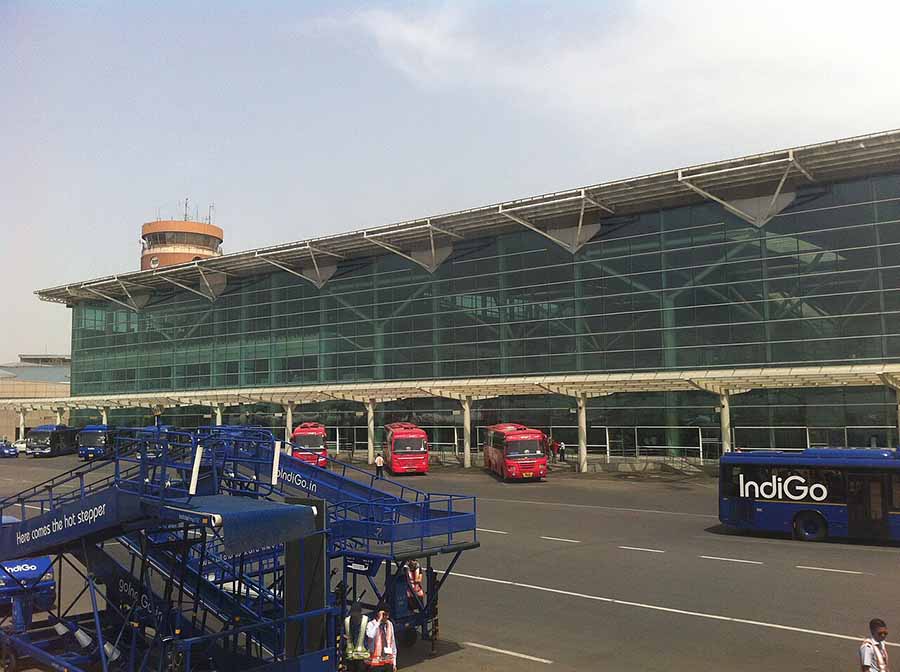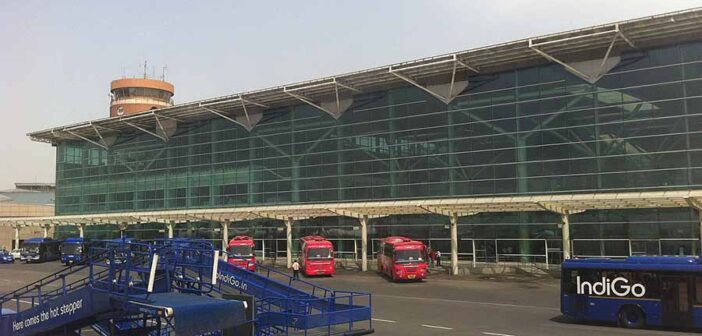
A Traveller’s Guide to Indira Gandhi International AirportIndira Gandhi International Airport, or DEL, serves as a bustling gateway to India’s capital, offering a modern and efficient experience for travellers.
The passenger experience at DEL, handling over 79 million passengers annually across 150 destinations, is shaped by its expansive yet navigable three-terminal complex, primarily operated by Delhi International Airport Limited (DIAL). Serving as a hub for Air India, IndiGo, and Vistara, alongside international carriers like Emirates and Lufthansa, the airport features clear signage and state-of-the-art amenities. Terminal 3, designed by HOK, spans 5.4 million square feet and handles all international and some domestic flights, with local touches like mudra sculptures in the arrivals hall adding a cultural flair. Terminals 1 and 2, dedicated to domestic low-cost carriers, are compact but functional, with recent upgrades enhancing capacity to 40 million passengers annually at Terminal 1.
Accessing the airport from Delhi’s city centre, 16 kilometres away, is convenient and varied. The Delhi Metro’s Orange Line (Airport Express) connects New Delhi Railway Station to Terminal 3 in 20 minutes for £0.50, running every 10-15 minutes from 4:45 am. to 11:30 pm. DTC buses operate 24/7 from Connaught Place and Kashmere Gate ISBT to the airport for £0.30, though travel time can reach 45 minutes in traffic.
Taxis and rideshares like Uber and Ola, available at all terminals, cost £5-£8 to the city centre, while car rental agencies like Avis and Sixt are located in Terminal 3’s arrivals area. A multi-level car park at Terminal 3 offers 4,300 spaces, with rates from £1 per hour, and advance booking is available online.
The airport’s layout includes three passenger terminals: Terminal 1 (domestic, low-cost carriers like IndiGo), Terminal 2 (additional domestic flights, temporarily closed for upgrades until September 2025), and Terminal 3 (international and premium domestic flights). Terminals 1 and 3, 8 kilometres apart, require a 45-minute road transfer via free shuttle or taxi, while Terminal 2 is within walking distance of Terminal 3. Terminal 3’s six levels include 87 check-in desks, 95 immigration counters, and 18 aerobridges, ensuring efficient flow, though long walking distances to gates can challenge some travellers. A planned Automatic People Mover (APM) light rail will enhance inter-terminal connectivity by 2026.
Delays can occur during winter fog, particularly in December and January, disrupting morning and evening flights.
Security and immigration queues in Terminal 3 may lengthen during peak hours, and baggage claim for international arrivals can take up to an hour. Arriving three hours early for international flights and two for domestic is recommended, with airline apps advised for real-time gate updates. Fast Track immigration for business-class passengers helps expedite processes.
Dining options cater to diverse palates, with Terminal 3’s food court featuring Dilli Street for Indian street food, Curry Kitchen for regional dishes, and international chains like McDonald’s, KFC, and Costa Coffee. Terminal 1 offers Punjab Grill for chaat and Delhi Heights for sit-down meals, while Terminal 2 has limited but functional eateries like Subway. Most outlets close by midnight. Retail includes extensive duty-free shops in Terminal 3 by Heinemann, offering perfumes, electronics, and Indian souvenirs like teas and spices, alongside luxury brands like Chanel and Hugo Boss. Terminal 1 has smaller shops for apparel and gifts.
Facilities enhance comfort, with free Wi-Fi via GMR Free Wi-Fi (OTP-activated), though an Indian phone number is required for access. Charging stations, ATMs, and currency exchange counters are widespread, with Thomas Cook in Terminal 3. Accessibility services include smart restrooms, wheelchair assistance, and buggy services, bookable via Atithya Meet and Greet. Pet Fly in Terminal 3 supports pet travel, and a daycare room caters to families. Lounges like Plaza Premium, Air India Maharaja, and Amex Centurion in Terminal 3 offer relaxation for a fee, while a Holiday Inn Express transit hotel and sleeping pods in Terminal 3 serve layovers. Smoking zones are available post-security in all terminals.
On-time performance is generally reliable, supported by four runways and AI-enabled operations, though fog and peak-hour congestion can cause delays. Connections within Terminal 3 are swift, taking 30-45 minutes for international-to-international transfers. Domestic-to-international or Terminal 1-to-Terminal 3 transfers require 1.5-3 hours due to road travel and customs, with a minimum three-hour layover advised for self-transfers.
Indira Gandhi International Airport combines modern infrastructure with thoughtful amenities, offering a smooth experience for travellers. Its robust connectivity and ongoing expansions ensure it remains a key hub for exploring Delhi and beyond.




